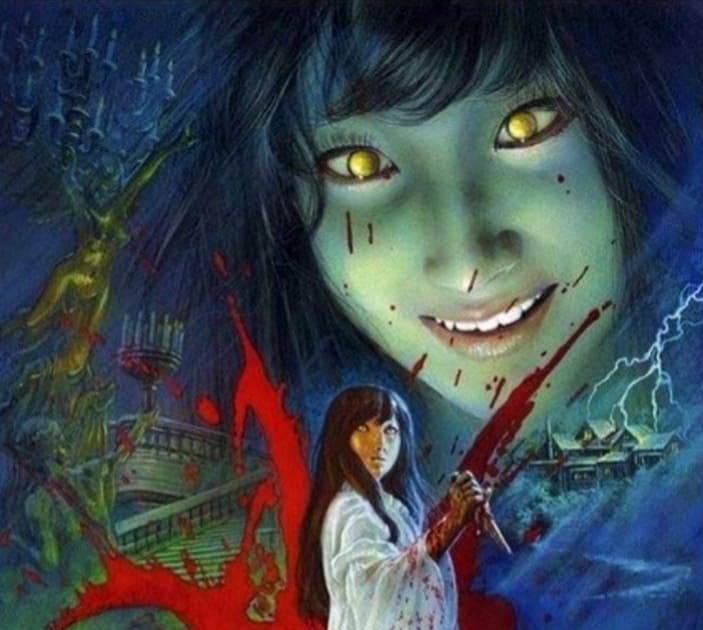The Vampire Doll is a 1970 Japanese horror movie, the first in what became known as the Bloodthirsty Trilogy.
Kazuhiko Sagawa (Atsuo Nakamura) has been overseas for six months. As the movie opens he is on his way to see his fiancée Yûko Nonomura (Yukiko Kobayashi). He will be staying at the home of the Nonomura family in the country for a few days. He arrives only to be told by her mother that Yûko was killed in a car accident two weeks earlier. He is of course devastated. That night he thinks he sees Yûko but of course it must have been a dream.
The focus of the film now switches to Sagawa’s sister Keiko (Kayo Matsuo). She’s worried that she hasn’t heard from her brother. Keiko and her boyfriend Hiroshi (Akira Nakao) decide to drive out to the Nonomura home to make sure that Sagawa is OK.
What they find there makes them just a little uneasy. Yûko’s mother seems a bit evasive. Keiko finds a doll that Sagawa has bought for Yûko as a present. The doll has been smashed, which seems odd. Keiko and Hiroshi are not exactly alarmed but they’re not entirely satisfied, and they’re worried that they have found no trace whatsoever of Keiko’s brother.
And they hear some slightly disturbing stories about the Nonomura family.
Something very bad happened in the past and it may be the key to what is happening now.
Speaking to Yûko’s doctor increases their unease.
What does alarm them is seeing Yûko.
The story develops in much the way you would expect a gothic horror tale to develop, with a few significant differences.
Keiko and Hiroshi start to suspect that something bad has happened to Sagawa, and that they might be in danger as well.
There’s also the Nonomura family servant, Genzo. He has a habit of attacking people and gives the impression that he sees himself as defending the Nonomura family.
This is a Japanese horror film with an unusually strong western influence. Vampires are part of the western gothic horror tradition. Vampires as such are not really a feature of Japanese folklore. The Japanese (and Chinese) concept of the supernatural is much more focused on ghosts but Japanese ghosts are not quite like western ghosts. They’re corporeal rather than being disembodied spirits.
A lot of the familiar elements of the vampire myth are missing in this movie. There are no crucifixes or holy water and no mention of garlic. There are no mentions of stakes through the heart. The vampire does not sleep in a coffin.
Crucially this vampire does kill but does not drink blood. Blood is not the motivation for the killings. Revenge is the motivation. And revenge is the motivation you would expect of a ghost.
My impression is that this is essentially a ghost story with the apparent western influences being entirely superficial. Vampires were a big thing in western pop culture and the Japanese have always been very aware of trends in western pop culture. The Japanese have always been willing to absorb western pop culture influences but somehow Japanese pop culture remains Japanese pop culture. In this movie the vampire elements are like a seasoning but the main dish is a Japanese ghost story.
Director Michio Yamamoto provides some gothic trappings but doesn’t overdo them. He is not trying to make this movie look like a Hammer horror film. It has a certain Japanese aesthetic austerity.
The vampire makeup is also not overdone but it’s effectively creepy. There’s one brief gore scene but overall this is a movie that relies on creepy atmosphere rather than gushing blood.
The Vampire Doll manages to be a rather interesting slightly unusual vampire movie and on the whole it works. Highly recommended.
The Arrow release offers a nice transfer and there’s an appreciation by Kim Newman which is, as you would expect, informative and entertaining.




